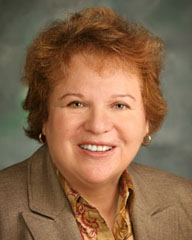By Marcella Peralta Simon
ACT I SCENE I
2020, A Living Room in Florida
The painting hangs on the wall. It depicts an oxcart winding its way on rutty brown dirt roads past red tiled roofs. Slouching men with battered hats carry spades and machetes. Women stand outside doors in shapeless skirts, hands weathered from grinding corn and hanging freshly washed sheets in the dusty wind. All is brown and rust and grey.
ACT I SCENE II
1930’s Rural Costa Rica
The young girl brightens with childish joy when she finds an egg under the hay in the old barn. She shrieks with horror when a fuzzy chick is carried off by an eagle. She droops with sadness when her father leaves for God knows how long, his Model T jolting over the ruts on his way to town.
They all work for her father, the men with battered hats, their shapeless wives, their dirty children and flea ravaged dogs, skinny oxen. He is a Diputado (Senator), a self- made “man of the people”- with vast tracts of coffee- dark green leaves with ruby red berries, and mistresses scattered across the county.
Two fat little girls run screaming around the corner, hair ribbons flying. They are identical twins, triumphant at fooling the nuns by swapping out identities. They are the last of seven and largely ignored, once dumped by servants into a pit to play with a shared doll.
ACT I SCENE III
1950’s San José, Costa Rica
“Girls do not need to go to university”, her father declares sternly. She quietly enrolls and works in her cousin’s lab to pay tuition. Her twin Teresa takes off to study art in Florence. Their older sister, the beauty, falls in love with a campesino and marries a Mafioso who owns half the buildings downtown, belt marks from their father scarring her back.
ACT II SCENE I
1980’s Rural Costa Rica
A young woman, Maria’s daughter, sits on the porch beneath swinging wire baskets of pink veranara reading vintage science fiction. She shouts “A Dios” at women trudging up the hill to the old farmhouse carrying burlap bags from the market. Tractors rumble past pulling carts of blackened sugar cane stalks to be weighed at the cooperative founded by her grandfather.
Holstered men sent by her uncle appear at the door, meant to threaten, to intimidate over water. Coffee is a thirsty plant. “Vayase, get off of my land”, her mother shouts, hands on hips in defiance.
Twenty five years the stranger in a strange land, the housewife in Ohio, Maria suddenly appears to her daughter.
ACT II SCENE II
2016, A House in Suburban Virginia
She can still speak, mostly Spanish now, and sips her morning coffee, pursing her lips with a sigh after each swallow. She defied her father and brothers, but cannot defy the illness that slithers through her brain, leaving tracks in the sand.
She tells her daughter “You know, Teresa came to see me yesterday. She was on her way with a family to a town deep in the mountains.”
ACT III, SCENE I
Christmas 2018, a House in Rural Costa Rica
Maria’s daughter, now retired and a grandmother herself, comes bearing a bag of ashes. First stop to visit Teresa, her mother’s twin, resting comfortably in a wheelchair, her oil paintings choking the walls and scattered in piles displacing the spare bedroom. She tells her niece “you know Maria came to see me yesterday. She was travelling with some students on a bus, going to university.”
Her niece takes out a pair of nail scissors and carefully separates a canvass from its frame, staple by rusty staple. Dry with age, the canvass wheezes as it is rolled and placed in a suitcase.
ACT III SCENE II
2019, A Park in Suburban Virginia
A Crepe Myrtle sits behind a bench, its scarlet blooms in full glory. An inscription on a plaque rests by its trunk. It reads Maria E. Simon 1926-2018. The whole of her, Maria Eugenia Peralta Rodriguez de Simon, would not fit on the plaque.
ACT III SCENE III
2020, A Living Room in Florida
The painting hangs on the wall. It depicts an oxcart winding its way on rutty brown dirt roads past red tiled roofs. Slouching men with battered hats carry spades and machetes. Women stand outside doors in shapeless skirts, hands weathered from grinding corn and hanging freshly washed sheets in the dusty wind. All is brown and rust and grey. Two fat little girls run screaming around the corner, hair ribbons flying.

Marcella Peralta Simon is a recently retired grandmother, splitting her time between Cambridge, UK and Kissimmee, Florida. She has been a diplomat, university lecturer/administrator, and instructional designer. She published Coogee Haikus in a journal for emerging Western Australian Writers. She also teaches online, paints landscapes and abstracts, and explores woodlands and wetlands with her husband and Treeing Walker Coonhound. She wrote Maria, In Three Acts as a tribute to her late mother.
![[PANK]](https://pankmagazine.com/wp-content/themes/pank/assets/images/pank-logo-large.png)
